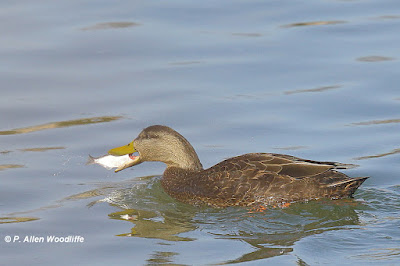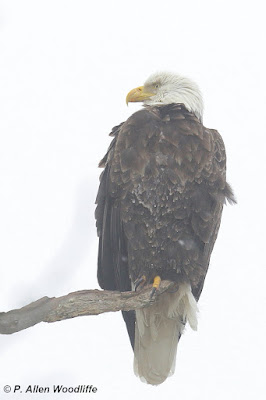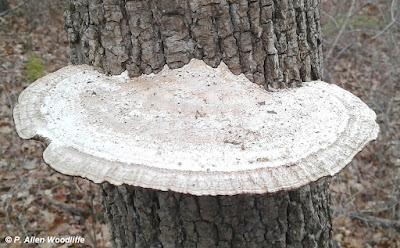This Wednesday, Feb 2, 2022, is World Wetlands Day. On average, wetlands don't get a lot of respect. They have been viewed negatively as being in the way to productivity, especially agriculture. Certainly drained wetlands can be extremely productive, especially for certain crop types. But their value to wildlife, their ability to stop or at least slow down flooding and the like, were often ignored. Eventually enough flooding catastrophes occurred and they received an increasing level of protection. Of course it helped that many outdoors people recognized their values to wildlife as well, and organizations like Ducks Unlimited and their members spent untold millions of dollars over the years to help protect them. Provincial and federal agencies also contributed in various ways, resulting in places like St. Clair National Wildlife Area. Provincial and national parks often included significant wetlands within their boundaries.
 |
| St. Clair NWA |
 |
| Rondeau Prov Park |
I decided that to highlight World Wetlands Day, I would feature the King Rail. King Rail has only been known to breed in significant wetlands across the southern parts of Ontario, and has never been abundant. There are a small number of observations in areas slightly north of southern Ontario, but I am not aware of any confirmed breeding. It has been officially listed as an Endangered Species for around three decades, primarily due to the diminishing of its wetland habitat.
I have a copy of an unpublished manuscript, written in the later 1940s, entitled "The Birds of Kent County, Ontario" by A. A. Wood. He researched and quoted from almost 100 sources of information on birds, including some of the best known naturalists of the previous several decades. Some of the names that frequently crop up in his writing include J. L Baillie, A. C. Bent, Thomas McIlwraith, G. T. McKeough, Ed. W. Sandys, W. E. Saunders, G. M. Stirrett and P. A. Taverner.
Wood has an entry for King Rail, and I include part of it here:
King Rail (Rallus elegans)--A rather scarce summer resident except at the St. Clair marshes where it breeds regularly. Morden and Saunders, in 1882, listed it as "common at the St. Clair flats where it breeds". McIlwraith said in 1884, 'is now known to breed plentifully at the St. Clair flats". Baillie and Harrington state "This rail occurs as a breeding species in various marshes on Lakes St. Clair and Erie.......it is not common in Ontario except at St. Clair flats".
Wood goes on to include writings by various field people describing their findings of adults with young as well as nests with eggs. He also lists various observations dating to the 1880s as well as a few examples of eggs that were collected, back in the 1890s. Of course egg collecting was commonplace in that era. He mentions that the average arrival date over a four year period was April 23, with the earliest being April 3, 1945.
One of the places where King Rail was found back in that day, was well away from these lake side wetlands. It was at a fairly large inland marsh at Thamesville, in May of 1921. Although that wetland still exists, sort of, it has deteriorated considerably due to being almost totally taken over by the invasive Common Reed (Phragmites australis). These next two photos show a side-by-side capture of this wetland at the western side of Thamesville. It is solid Phragmites, with very little wildlife value.
The status of King Rail in Ontario since Wood's writing has since declined. It is not common anywhere, even the St. Clair flats, which was the accepted name for the collection of many marshes bordering Lake St. Clair. The wetlands at Walpole Island First Nation, shown below, is one of the largest contiguous marshes in these lakes. However the vast majority of it is inaccessible.
 |
| Walpole Island First Nation |
To my knowledge, that was the last time a nest has been found in Ontario! That isn't to say that they haven't occurred, but the habitat they occur in is almost impossible to get through. The nest site we found was actually somewhat approachable, due to the fact that we had a small boat and chest waders. Unfortunately the site had the water levels altered in subsequent years, and there hasn't been suitable habitat for King Rail there for about 4 decades.
One of the highlights of late summer 2019 was to discover a King Rail at a wetland in southern Chatham-Kent. A bonus was to discover one, and possibly three, almost fully grown young! The site was reasonably accessible, so I decided to try for some new photos to add to my collection. I headed out, and very carefully got into a position where I thought I would have a reasonable chance to see some movement of the rails scurrying around for food. I had the maximum telephoto combination, to ensure the best quality images from a distance so as to minimize any disturbance if the birds should show themselves. After waiting patiently and quietly, I saw some movement: a rail!
After a bit more patient waiting, this young King Rail appeared from behind some vegetation.
It came a bit closer, but was wary, slowly and cautiously moving across the more open area...
...but eventually decided a less open bit of the habitat was more to its liking.
I kept an eye open for an adult. Sure enough, a little bit of movement got my attention. Can you see the adult King Rail in the next photo? It is in the centre, staring at us.
It came out a little more, but cautiously just like the younger one.
It came out into the open more and more, allowing me to get a few photos. All of these are well cropped, but quite acceptable since it was out in the full open spot, at least for a short time.
I've heard a couple of King Rails since that event, but always in the spring or very early summer when they are typically more vocal. None have been reported from this particular site, however. Hopefully with the efforts of the Ontario Breeding Bird Atlas, some successful discoveries of this incredible bird will be documented.
If you would like to subscribe, or unsubscribe, from Nature Nuggets, send an email to prairietramper@gmail.com





























































